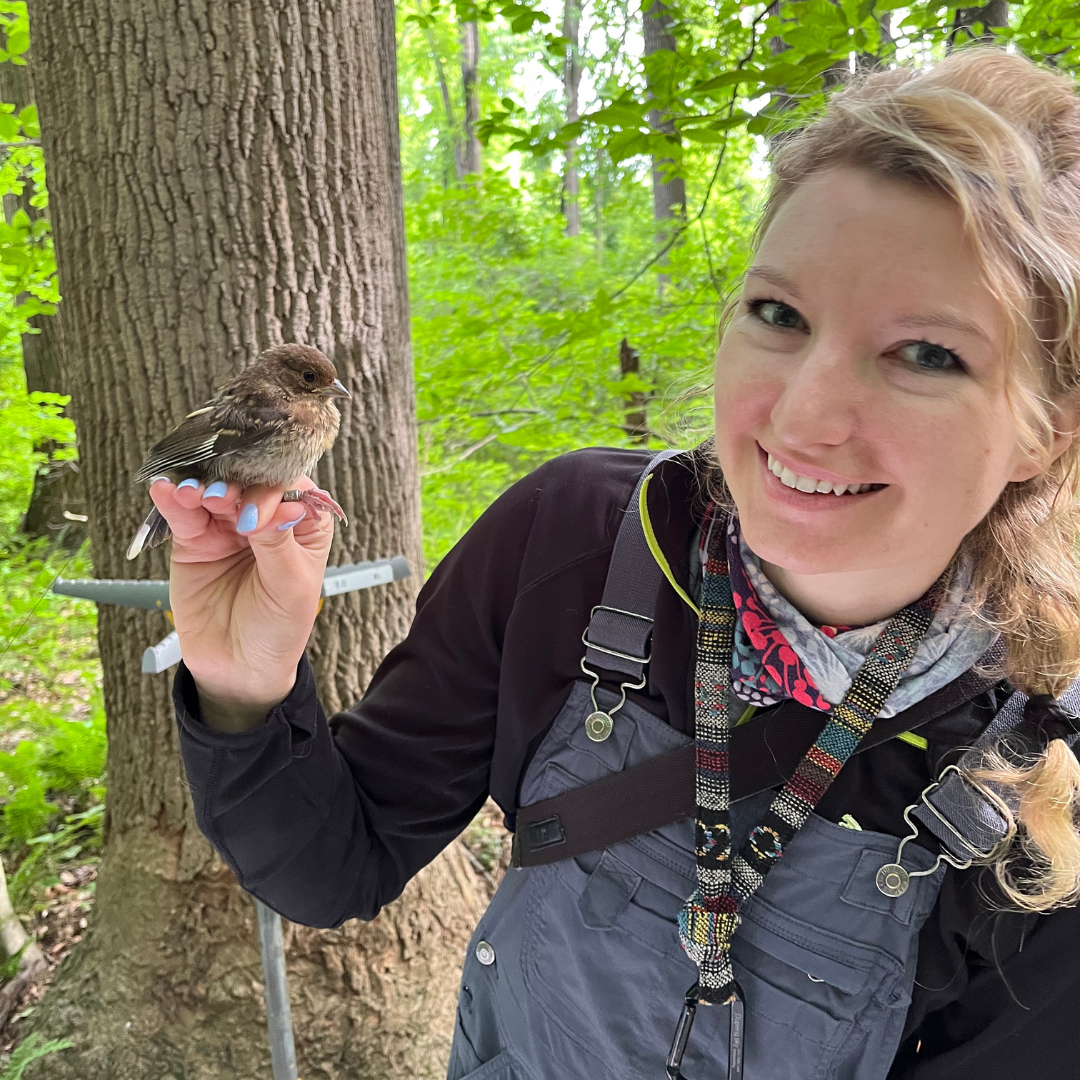Eastern Towhee Project
While Eastern Towhees are still common and widespread, their population trends in the Northeast, where they are listed as a Species of Greatest Conservation Need, are alarming. There are many theories about why bird populations are declining including habitat loss, light pollution, and the presence of free-ranging cats. All of these factors merge together to create inhospitable landscapes for birds. During the first year of a bird’s life, they are especially susceptible to these dangers. Mortality for juvenile birds making their first migration is much greater than for adults. Even in adults, the migration phase is often where mortality is greatest and may drive population declines. However, much of what we know about juvenile migration patterns comes from larger bird species and not songbirds.

Statement from project leader, Shelly Eshleman:
“From 2022-2024 collaborators and I will place approximately 180 multi-year radio tags on immature and adult Eastern Towhees at sites in Mid-Atlantic and Northeastern states. The Great Marsh Institute is one of our primary field sites for this study. The tags that we place on birds have small solar panels that recharge the onboard battery so that the tag will transmit signals for the life of the bird. Approximately half of our tags are placed on immature birds and half are placed on adult birds. As the birds migrate, they will be tracked through the Motus Wildlife Tracking System, a network of more than 1,300 coordinated, automated radio telemetry receiving stations. I hope this data will allow us to determine whether populations of Eastern Towhee in eastern PA are migratory or sedentary and the migration timing and pathways taken by adult and immature birds. Jim and I are also gathering information about the specific habitats that Eastern Towhees are using at GMI.”

About Shelly
Shelly is a staff member at the Willistown Conservation Trust and a Ph.D. student in Dr. Jeff Buler’s Aeroecology lab at the University of Delaware. Her dissertation research will focus on the conservation of Pennsylvania’s avian species and will utilize the Motus tracking system, a network of automated radio telemetry receivers. Her previous research used data logging tags to track the migratory movements of Red-winged Blackbirds (Agelaius phoeniceus) and correlated reproductive hormones with spring migration distance in a collaborative project with the USDA.
